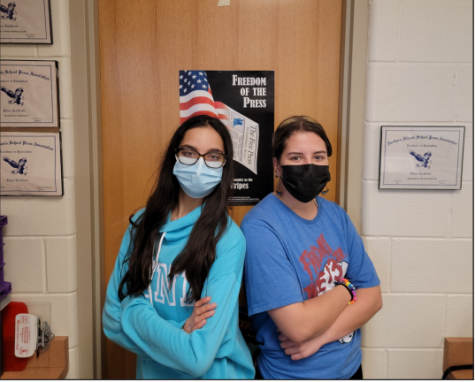Staff Editorial: CDC quickly takes risks
The minimum quarantine period, per the Centers for Disease Control (CDC), had recently been cut in half overnight despite the height of the Omicron variant.
An ultimately hasty decision leaving more people at risk, the recommendations changed from two weeks in March 2020 to ten days then only five days on Dec. 27.
Nothing is worth the risk of endangering people nationwide given recent findings indicating COVID-19 viral levels remain longer than five days.
A study published in the International Journal of Infectious Diseases just 20 days prior to the quarantine changes found after ten days from symptom onset, 13% of those tested “still exhibited clinically relevant levels of virus.”
The study concludes that potentially active virus “could pose a potential risk of onward transmission. Where this would pose a serious public health threat, additional mitigation strategies may be necessary to reduce the risk of secondary cases in vulnerable settings.”
The five-day quarantine policy proves the exact opposite of “additional mitigation strategies.”
The CDC pondered requiring a negative test to break quarantine, but then stood by their decision to keep final testing optional, according to Apoorva Mandavilli for the New York Times.
A negative test was deemed optional by the CDC because of evidence that the majority of transmission occurs in the two days before symptom onset and after onset for two to three days. The option was also defended because, after isolation, recovered people could wear a mask (not even required in many places now including D202 buildings), and the unreliability of rapid tests.
Seriously? Shouldn’t an abundance of caution be necessary to keep this country protected? What about requiring a longer, more reliable test to break quarantine?
Reckless behavior should never be expected of the CDC in a world ridden by cases, variants, and overflowing hospitals.
Even more so, the World Health Organization’s Director-General Tedros Adhanom Ghebreyesus noted on Jan. 6 that Omicron should not be “categorized as ‘mild.’ Just like previous variants, Omicron is hospitalizing people and it is killing people.”
Seems like cause for concern, right?
Apparently not for the CDC which seems more focused on cutting quarantine in half – even when weekly seven-day averages between December and January doubled compared with last year (January 2021 was the second largest peak, and January 2022 was the largest peak).
Despite the CDC’s risky decision, Dr. Anthony Fauci, in an interview on Dec. 27 with CNN’s Jim Acosta, stood in solidarity with the new CDC guidelines, claiming “Instead of keeping people out of action, out of work, out of society, for 10 days, if you’re infected and without symptoms then you have five days of isolation and then you can go back out into society with a mask worn consistently,” Fauci said.
But according to UCHealth, asymptomatic people can still transmit the virus, and a Jan. 7 study published on the JAMA Network found “transmission from asymptomatic individuals was estimated to account for more than half of all transmission.”
The risks of a shorter quarantine greatly outweigh the benefits of economic gain, and it places a higher priority on a return to work than the safety of so many from the triple-vaccinated to the immunocompromised.
Ultimately, the willingness to value normalcy and shorter hassle for quarantine periods only continues the pattern of the United States’s band aid solutions – when an operation of greater caution and compassion for one’s fellow man proves necessary for true sustainable recovery.








